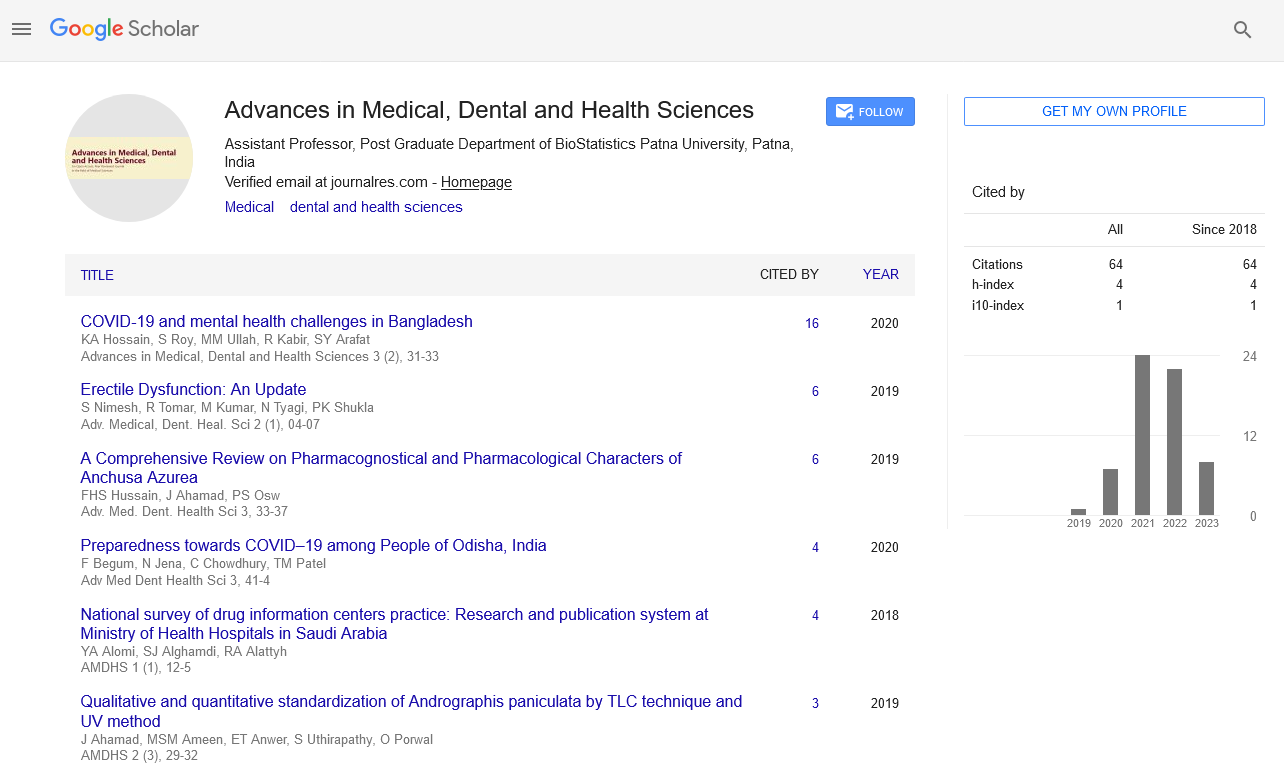Prevalence of Lipid Abnormalities (Low HDL, High TG) Among Angiographically Proved CAD Patients
Abstract
Author(s): Md. Amir Hossain*, Muhammed Akhtaruzzaman, Monir Uddin Ahmed, Mustafa Aolad Hossain, Arman Ibne Huq and Md. Rezaul Karim
Introduction: Dyslipidemia is a major primary risk factor for Coronary Artery Disease (CAD). Asians differs in prevalence of various lipid abnormalities than non-Asians. This study was conducted with the objective to assess the prevalence and pattern of lipid abnormalities and there correlation in patients with angiographically documented Coronary Artery Disease (CAD).
Objective: This study sought to determine the prevalence of lipid abnormality, specially in the form of low HDL-C and high TG, among patients with significant Coronary Artery Disease (CAD), (stenosis ≥ 50%) determined through coronary angiography as this is not well described in this population.
Methods: In a cross-sectional study, observational study, among 112 patients who underwent coronary angiography, we studied 81 cases who were diagnosed with significant CAD with stenosis ≥ 50%, as shown angiographically were found to have >50% coronary stenosis, defined as significant CAD. All patients were evaluated for risk factors and blood samples were collected for measuring fasting lipid profile in all patients during the admission for the coronary angiography. The data was analyzed to find statistical evidence for association between HDL-C and the pattern of CAD.
Results: Among 112 cases, 95 were diagnosed with significant CAD while 17 had non-significant disease. These 95 cases were include in the study. The mean age ( ± Standard deviation) was 53.63 ± 8.85, ranging from 28 years to 75 years. The majority of patients were males representing % of the cases {81/95 or 91/112}. The lipid profile analysis revealed that the mean total cholesterol was 179.79 ± 55.46 mg/dl, mean Low-Density Lipoprotein Cholesterol (LDL-C) was 103.54 ± 42.83 mg/dl, mean High Density Lipoprotein Cholesterol (HDL-C) was low, 34.47 ± 6.98 mg/dl and mean triglyceride level was high, 200.06 ± 143.3 mg/dl. 88% of patients had some form of dyslipidemia. The most frequent form of dyslipidemia among these patients was low levels of High-Density Lipoprotein Cholesterol (HDL-C) among 86.6% of the patients followed by 60.7% of patients with high Triglyceridemia (TG), 30.4% of the patients having high Total Cholesterol (TC) and 24.7% with high Low-Density Lipoprotein Cholesterol (LDL-C). 17 (15.2%) patients had normal coronary arteries, 32 (28.6%) had one vessel disease, 29 (25.9 %) had two vessel disease and 30 (26.8%) had three vessel disease.
Conclusion: Dyslipidemia is a highly prevalent risk factor among Bangladeshi patients with CAD. Low HDL-C was the most frequent lipid abnormality. Hypertriglyceridemia and low HDL cholesterol is common in patients with CAD compared with hypercholesterolemia and high LDL-C. This suggests the need to rethink treatment thresholds and targets in this population. The low HDL-C level among Bangladeshi patients require further study and targeted intervention.
